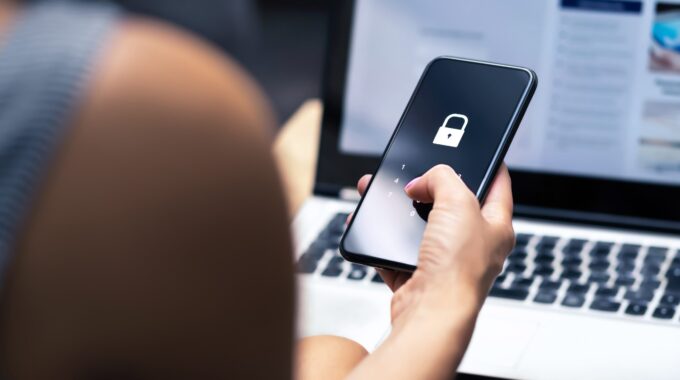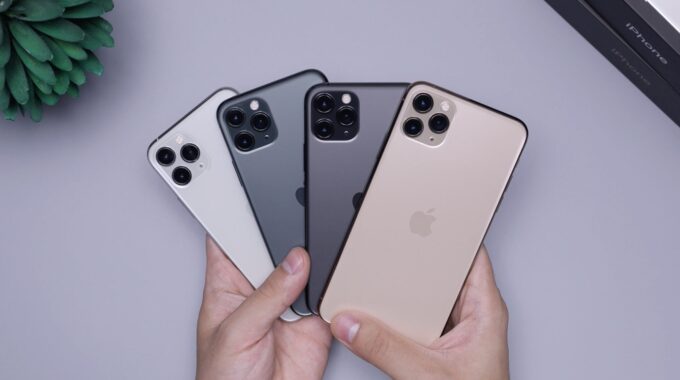Optimise and Protect: Best Practices for Your Phone’s Storage and Safety

Proper phone storage and safety practices are essential for maintaining the functionality and longevity of your device. With smartphones being an integral part of our daily lives, ensuring that your phone’s storage is optimised and its data is secure has never been more critical. Efficient storage management not only enhances performance but also prevents potential issues such as slow operation and data loss. Additionally, safeguarding your phone from physical damage, malware, and unauthorised access protects your personal information and prolongs the device’s lifespan. This guide will provide you with best practices for managing phone storage and ensuring safety, covering aspects such as decluttering storage, securing data, and protecting your device from physical and digital threats. By following these recommendations, you can enjoy a seamless and secure smartphone experience, keeping your device running smoothly and your information safe.
Optimising Phone Storage
Effective management of your phone’s storage is crucial for maintaining its performance and ensuring smooth operation. Here are some best practices to help you optimise your phone’s storage.
1. Regularly Delete Unnecessary Files:
- Periodically review and delete files that are no longer needed, such as old photos, videos, and documents.
- Use your phone’s built-in storage management tools to identify large files and apps that are taking up excessive space.
2. Use Cloud Storage Services:
- Cloud storage solutions like Google Drive, iCloud, and Dropbox allow you to store files remotely, freeing up local storage on your phone.
- Regularly back up important files to the cloud to ensure they are safe and accessible from any device.
3. Manage and Uninstall Unused Apps:
- Review your installed apps and uninstall those you rarely use. Apps can consume significant storage space and background resources.
- Consider using lightweight versions of apps, such as Facebook Lite, which take up less space and use fewer resources.
4. Clear Cache and Temporary Files:
- Apps accumulate cache and temporary files over time, which can occupy valuable storage space. Regularly clearing these files can free up space and improve performance.
- Use built-in settings or third-party apps like CCleaner to manage and clear cache files effectively.
5. Store Media Files on External Storage:
- If your phone supports expandable storage, use an SD card to store photos, videos, and music. This can help free up internal storage for apps and system files.
- Regularly transfer media files to your computer or external hard drive to keep your phone’s storage uncluttered.
Ensuring Data Security
Protecting your data from unauthorised access and potential threats is essential for maintaining your phone’s safety. Implementing these practices can help secure your personal information.
1. Use Strong Passwords and Biometric Security:
- Set a strong password, PIN, or pattern lock to secure your phone. Avoid using easily guessable information like birthdays or common sequences.
- Enable biometric security features, such as fingerprint or facial recognition, for an additional layer of protection.
2. Enable Two-Factor Authentication (2FA):
- Activate 2FA on your accounts to add an extra layer of security. This requires a second form of verification, such as a code sent to your phone, in addition to your password.
- Use an authentication app like Google Authenticator for more secure 2FA.
3. Keep Your Software Updated:
- Regularly update your phone’s operating system and apps to ensure you have the latest security patches and features.
- Enable automatic updates to ensure you do not miss critical security updates.
4. Install a Reliable Security App:
- Use a reputable security app, such as Avast Mobile Security or Bitdefender, to protect your phone from malware, phishing attacks, and other threats.
- Regularly scan your phone for potential threats and take immediate action if any are detected.
5. Be Cautious with App Permissions:
- Review the permissions requested by apps before installing them. Be wary of apps that request access to sensitive information or features that are not necessary for their functionality.
- Use your phone’s settings to manage app permissions and revoke access to unnecessary features.
Protecting Your Phone Physically
Physical protection is just as important as digital security. Taking measures to safeguard your phone from physical damage can prolong its lifespan and maintain its functionality.
1. Use a Protective Case and Screen Protector:
- Invest in a high-quality protective case that can absorb shocks and prevent damage from drops and impacts.
- Apply a tempered glass screen protector to guard against scratches and cracks.
2. Avoid Extreme Temperatures:
- Exposure to extreme heat or cold can damage your phone’s battery and internal components. Avoid leaving your phone in direct sunlight or in a car on hot days.
- In cold weather, keep your phone in a pocket or bag to prevent it from getting too cold.
3. Handle Your Phone with Care:
- Be mindful of where you place your phone to avoid accidental drops. Use a phone stand or holder when not in use.
- Avoid using your phone with wet or dirty hands, as moisture and debris can damage the internal components.
4. Keep Your Phone Dry:
- Protect your phone from water damage by avoiding use in wet conditions and investing in a waterproof case if necessary.
- If your phone gets wet, turn it off immediately, dry it thoroughly, and use silica gel packs or rice to absorb any remaining moisture.
Regular Maintenance and Monitoring
Routine maintenance and monitoring can help you catch potential issues early and keep your phone running smoothly.
1. Regularly Restart Your Phone:
- Restarting your phone can help clear temporary files and refresh system processes, improving performance.
- Aim to restart your phone at least once a week to keep it running efficiently.
2. Monitor System Performance:
- Use built-in tools or third-party apps to monitor your phone’s performance, including CPU usage, battery health, and storage space.
- Identify and address any issues that may be affecting your phone’s performance, such as background apps consuming excessive resources.
3. Backup Your Data Regularly:
- Regularly back up your phone’s data to an external storage device or cloud service to protect against data loss.
- Schedule automatic backups to ensure your data is always up to date and secure.
4. Perform Regular Security Scans:
- Use a security app to perform regular scans for malware and other threats. Address any issues promptly to keep your phone safe.
- Keep an eye on your phone’s behaviour and be alert for signs of potential security issues, such as unusual battery drain or unexpected pop-ups.
By implementing these best practices for phone storage and safety, you can maintain your device’s performance, protect your data, and ensure a long lifespan for your phone. Regular maintenance and proactive measures are key to keeping your phone running smoothly and securely.
Ensuring Your Phone’s Storage and Safety
Managing your phone’s storage and ensuring its safety can seem overwhelming, but these best practices can help keep your device running smoothly and securely. Regular maintenance, from deleting unnecessary files to updating software, plays a crucial role in optimal performance. Additionally, safeguarding your phone against physical and digital threats protects your valuable data and prolongs its lifespan. For added peace of mind, consider accessories from Phone Repair NZ, designed to enhance your phone’s protection and functionality. Should you need further assistance or have any questions, our knowledgeable team is here to help. Visit our shop to explore high-quality accessories and expert advice tailored to your needs. At Phone Repair NZ, we are committed to ensuring you make the most of your smartphone experience. Make an informed choice today and enjoy the benefits of a well-maintained and secure phone.





